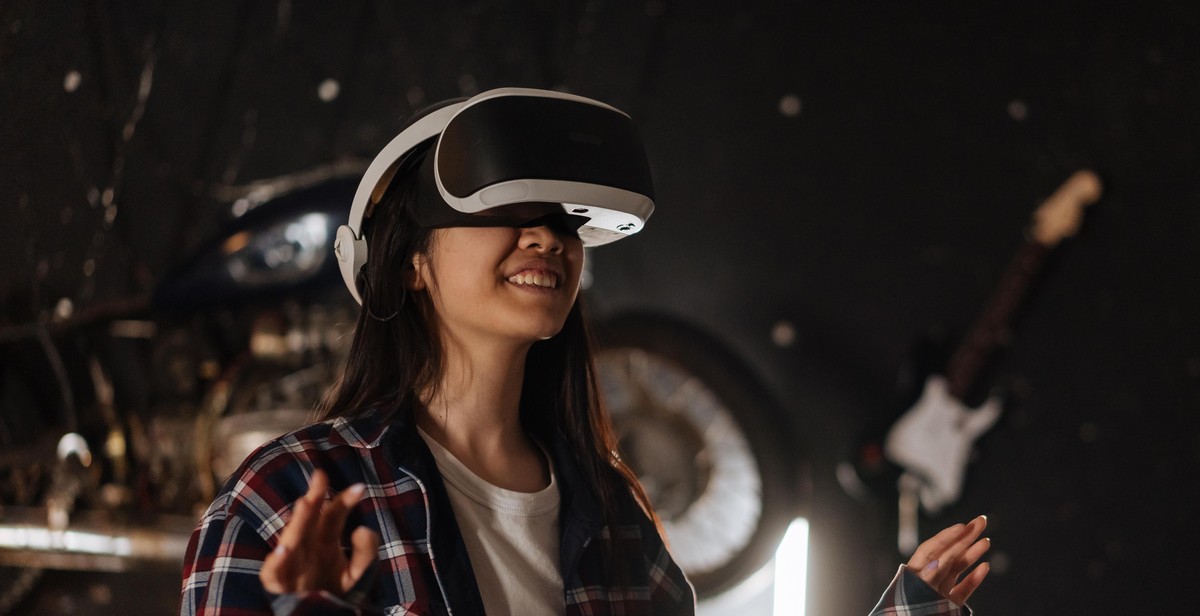The Ethics of AI in Virtual Reality: Navigating Artificial Worlds
Virtual Reality (VR) has revolutionized the way we experience digital content, transporting us to artificial worlds that feel incredibly real. As VR technology continues to advance, so does the integration of artificial intelligence (AI) within these virtual environments. While the combination of AI and VR opens up exciting possibilities, it also raises important ethical considerations that need careful navigation.
The Power of AI in Virtual Reality
AI in VR enhances the immersive experience by creating intelligent, responsive, and interactive virtual characters. These AI-driven avatars can simulate human-like behaviors, emotions, and even hold conversations with users. The ability of AI to adapt and learn from user interactions allows for dynamic and personalized experiences in virtual worlds.
The Ethical Dilemmas
However, the integration of AI in VR raises ethical concerns that must be addressed. One major concern is the potential for AI to manipulate users’ emotions and experiences within the virtual environment. The line between reality and the virtual world can become blurred, leading to psychological and emotional consequences for users.
Another ethical dilemma is the issue of consent and privacy. AI in VR has the potential to collect and analyze vast amounts of user data, raising questions about the protection of personal information and the potential for misuse.
Furthermore, there is the challenge of ensuring AI in VR does not perpetuate biases or reinforce harmful stereotypes. The programming of AI systems must be carefully designed to avoid discrimination and promote inclusivity.
Navigating the Ethical Landscape
As AI in VR continues to evolve, it is crucial to establish ethical guidelines and regulations. Transparency in AI algorithms and data collection practices is essential to build trust and protect user privacy. Additionally, ongoing research and collaboration between AI experts, psychologists, and ethicists are necessary to address the potential psychological impact of AI in VR.
By navigating the ethical landscape of AI in VR, we can unlock its transformative potential while safeguarding the well-being and rights of users in these artificial worlds.

Understanding AI in Virtual Reality
In recent years, the convergence of artificial intelligence (AI) and virtual reality (VR) has paved the way for exciting new possibilities. AI in virtual reality refers to the integration of intelligent algorithms and systems within virtual environments, enabling interactions and experiences that mimic human-like intelligence.
What is AI in Virtual Reality?
AI in virtual reality involves the use of machine learning algorithms, natural language processing, computer vision, and other AI techniques to enhance the realism and interactivity of virtual experiences. By incorporating AI, virtual reality can simulate intelligent behavior, adapt to user inputs, and even learn from user interactions to improve over time.
Virtual reality environments equipped with AI can create lifelike characters, known as virtual beings or agents, that can interact with users in a highly realistic and responsive manner. These virtual beings can exhibit emotions, engage in conversations, and perform complex tasks, making the virtual reality experience more immersive and engaging.
The Impact of AI in Virtual Reality
The integration of AI in virtual reality has the potential to revolutionize various fields and industries. Here are some key impacts of AI in virtual reality:
- Enhanced User Experiences: AI-powered virtual reality can provide users with personalized and adaptive experiences. By analyzing user preferences and behaviors, AI algorithms can dynamically adjust the virtual environment, creating tailored experiences that cater to individual needs and preferences.
- Realistic Interactions: AI in virtual reality enables more realistic and intelligent interactions between users and virtual beings. Virtual characters can understand natural language, recognize gestures, and respond in real-time, creating a sense of presence and immersion.
- Training and Education: AI-powered virtual reality can be used for training and educational purposes. For example, virtual reality simulations combined with AI algorithms can provide realistic training scenarios for medical professionals, pilots, or soldiers, allowing them to practice and refine their skills in a safe and controlled environment.
- Therapeutic Applications: AI in virtual reality has shown promise in therapeutic applications. Virtual reality environments combined with AI techniques can be used for mental health treatments, phobia exposure therapy, and rehabilitation programs, providing a safe and controlled environment for patients.
In conclusion, AI in virtual reality brings forth a new era of immersive and intelligent experiences. By harnessing the power of AI algorithms, virtual reality environments can become more realistic, adaptive, and interactive, opening up endless possibilities in entertainment, training, education, and therapy.

The Ethical Dilemmas
Privacy and Data Security
One of the most pressing ethical concerns surrounding the use of AI in virtual reality (VR) is the issue of privacy and data security. As users immerse themselves in artificial worlds, they often reveal personal information and engage in activities that can be monitored and recorded. This raises questions about who has access to this data and how it is being used.
Virtual reality platforms collect a vast amount of user data, including biometric information, browsing history, and even emotional responses. This data can be exploited for various purposes, such as targeted advertising or surveillance. The potential for abuse is significant, as personal information in the wrong hands can lead to identity theft, blackmail, or even manipulation of individuals.
To address these concerns, VR developers and AI companies must prioritize strong encryption and data protection measures. They should also be transparent about their data collection practices and provide users with clear opt-in and opt-out options. Additionally, regulations should be established to ensure that user data is handled responsibly and ethically.
Bias and Discrimination
Another ethical dilemma associated with AI in VR is the potential for bias and discrimination. AI algorithms are trained on vast amounts of data, which can inadvertently reflect the biases present in society. When these algorithms are used to power virtual reality experiences, it can perpetuate stereotypes and reinforce discriminatory behaviors.
For example, if an AI algorithm is biased against certain races or genders, it may result in discriminatory treatment within virtual environments. This can have real-world consequences, as individuals may be unfairly treated or excluded based on their virtual identity.
To mitigate this issue, AI developers must implement rigorous testing and validation processes to identify and eliminate biases in their algorithms. Additionally, diverse teams should be involved in the development and testing phases to ensure a more comprehensive and inclusive perspective. Regular audits and evaluations should also be conducted to monitor the performance of AI systems and address any potential biases that may arise.
Addiction and Dependency
The immersive nature of AI-powered virtual reality experiences can lead to addiction and dependency. Users may become so engrossed in these artificial worlds that they neglect real-life responsibilities and relationships. This raises ethical concerns about the potential negative impact on mental health and overall well-being.
VR developers should take responsibility for promoting healthy usage and preventing addiction. This can be achieved through features that encourage breaks, limit excessive usage, and provide resources for users to seek help if they develop problematic behaviors. Additionally, education about the risks of addiction and dependency should be provided to users, ensuring they are aware of the potential dangers and can make informed decisions.
Overall, as AI continues to advance in virtual reality, it is crucial to address the ethical dilemmas surrounding privacy and data security, bias and discrimination, as well as addiction and dependency. By implementing robust safeguards and fostering a culture of inclusivity and responsibility, we can maximize the benefits of AI in VR while minimizing its potential harms.

Navigating the Ethical Challenges
Regulation and Oversight
As virtual reality (VR) technology continues to evolve, it is crucial to establish robust regulations and oversight mechanisms to address the ethical challenges posed by artificial intelligence (AI) in VR. Governments and regulatory bodies must collaborate to develop comprehensive frameworks that safeguard users’ rights and privacy.
Regulation should focus on issues such as data collection and usage, algorithmic biases, and potential discriminatory practices within VR environments. It should also address concerns related to the creation and distribution of AI-generated content that may infringe upon intellectual property rights or promote harmful behaviors.
By implementing effective regulations, we can ensure that AI-powered VR experiences adhere to ethical guidelines and protect users from potential harm. This will create a safer and more inclusive virtual world for all participants.
Transparency and Accountability
Transparency is key to fostering trust in AI-driven VR experiences. VR developers and AI system creators should prioritize transparency by providing clear information about how AI algorithms operate within virtual environments. This includes disclosing data sources, training processes, and potential biases that may impact user experiences.
Additionally, platforms and developers should be accountable for the content and interactions facilitated by AI in VR. They should actively monitor and moderate user-generated content to prevent the spread of harmful or unethical behavior. Transparent reporting mechanisms should be in place to address user concerns and provide avenues for feedback and redress.
By promoting transparency and accountability, we can mitigate the risks associated with AI in VR and empower users to make informed decisions about their virtual experiences.
User Education and Empowerment
Education plays a crucial role in navigating the ethical challenges of AI in VR. Users should be informed about the potential risks and benefits of AI-driven VR experiences, enabling them to make conscious choices about their participation.
Platforms and developers should provide comprehensive user education materials, including guidelines on responsible VR usage, data privacy, and digital citizenship within virtual environments. These resources should be easily accessible and regularly updated to address emerging ethical concerns.
Furthermore, users should have the ability to customize their AI interactions, giving them more control over their virtual experiences. Empowering users to set boundaries and define their comfort levels with AI-driven interactions helps ensure that their ethical considerations are respected.
By prioritizing user education and empowerment, we can foster a more informed and responsible VR community, where users actively engage with AI in an ethical and conscientious manner.

Conclusion
In conclusion, the ethical implications of AI in virtual reality are complex and multifaceted. While AI technology has the potential to revolutionize the virtual world, it also raises significant concerns that need to be addressed.
Firstly, the issue of privacy and data security is paramount. As AI gathers vast amounts of user data to personalize virtual experiences, there is a need for stringent regulations to protect individuals’ sensitive information. Transparency and consent should be at the forefront, ensuring that users have control over their data and understand how it is being used.
Secondly, the potential for AI to perpetuate biases and stereotypes is a significant concern. Developers must actively work to eliminate any discriminatory algorithms and ensure that AI systems are fair, inclusive, and representative of diverse populations. This requires a comprehensive understanding of the social and cultural contexts in which AI operates.
Additionally, the impact of AI on human relationships and social interactions cannot be overlooked. As virtual reality becomes more immersive and realistic, there is a risk of individuals prioritizing virtual relationships over real-world connections. Striking a balance between the virtual and physical world is crucial to maintain healthy social dynamics.
Lastly, the responsibility of AI developers and policymakers cannot be understated. Collaboration between industry experts, ethicists, and regulators is essential to establish guidelines and frameworks that govern the ethical use of AI in virtual reality.
By navigating these ethical challenges and prioritizing the well-being of users, AI in virtual reality has the potential to enhance our lives, broaden our horizons, and create new possibilities for human interaction in artificial worlds.
